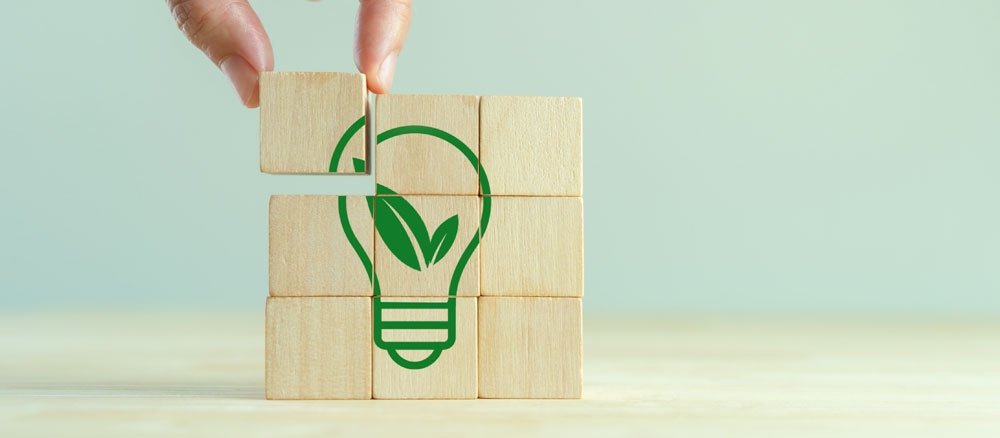Businesses that want to become more sustainable have lots of options, from reducing energy use and waste to changing product formulations. One strategy that could boost sustainability for many businesses is sourcing alternative products for their operations. Whether it’s chemicals, food, equipment, building materials, textiles, or something else, there are likely alternatives available that could lessen your environmental impact.
A reduced environmental impact can be measured in many ways. Sustainable products may need less water and energy to produce, be made with fewer or less harmful chemicals, take workers’ or community welfare into account, require fewer resources to use, or be easier to recycle or reuse. With so many factors to consider, it can be difficult to compare products and choose those that are least harmful to the environment.
Fortunately, many certification and labeling systems have established sustainable criteria for different products and highlight the best performers. Look for these certifications when procuring supplies for your business.
The EPA’s Safer Choice standard covers industrial cleaning and floor care products, laundry detergents, graffiti removers, drain cleaners, and more. The Safer Choice label indicates that the product contains only those ingredients that pose the least concern among chemicals in their class. For instance, if the product contains a surfactant, it will be the least toxic surfactant available. Visit the EPA web site to search for products that meet the Safer Choice standard.
The EPA’s WaterSense label is put on toilets, showerheads, faucets, urinals, irrigation equipment, and other products that use water efficiently. WaterSense-labeled products are generally 20% more water-efficient than similar products on the market. Search for products with the WaterSense label on the EPA web site.
The EPA’s Energy Star certification is commonly seen on home appliances, but it’s also been earned by building products, office equipment, light bulbs and fixtures, electronics, and more. The label indicates the product is energy efficient. Search for Energy Star products on the EPA web site.
The Green Seal certification is granted to commercial cleaning, laundry, paper, and painting products that have less toxicity, reduce waste, and are less harmful to water quality than conventional options. Search for Green Seal registered products on the organization’s web site.
The Cradle to Cradle program from the Cradle to Cradle Products Innovation Institute assesses products in five categories:
- Ensuring materials are safe to people and the environment
- Focusing on regenerative products that can be repurposed at the end of life rather than thrown out
- Protecting clear air, reducing harmful emissions, and promoting clean energy
- Safeguarding clean water and healthy soils
- Contributing to a fair and equitable society
The program certifies many consumer products, but you can also find building materials, office supplies, packaging and paper, and more. Visit the Cradle to Cradle web site to search the product registry.
The UL Greenguard certification is given to products that have lower emissions (off-gassing) of airborne chemicals from volatile organic compounds. The program is focused on building materials, furniture, and cleaning products that have the largest effect on indoor air quality. You can find the products in the UL SPOT database linked below.
The EPEAT label from the Global Electronics Council is given to TVs, computers, servers, cell phones, solar panels, imaging equipment, and other electronic products. The EPEAT certification indicates that the products adhere to IEEE standards for environmental and social responsibility, which address product lifecycle and longevity, energy conservation, toxic materials, and disposal options. Search for EPEAT labeled products on the Global Electronics Council web site.
A certification by the Forest Stewardship Council is given to wood and paper products that meet standards meant to protect forest ecosystems. The labels indicate that some or all the products are from forests that are managed sustainably, which includes protecting ecosystems and local communities and economies. Look for the Forest Stewardship Council label if you are purchasing wood or paper products.
One stop spot
The UL SPOT database allows you to search more than 130,000 environmentally friendly products in one place. The types of products listed include building materials, fixtures, HVAC, industrial products, textiles, cleaning products, paintings and coatings, plastic film and bags, printing material, and much more. You can search by more than 20 different environmental certification programs.
